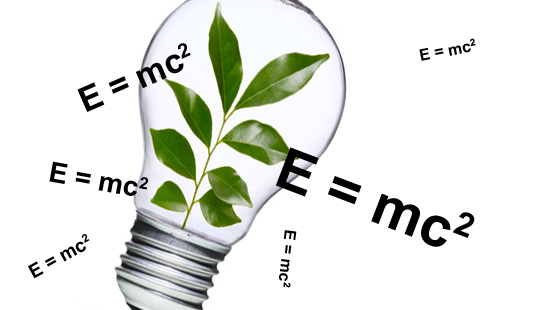 Nowadays, one of the most important merits big producers in general are trying to attract our attention is focusing on saving operational costs. We can see that in the automobile industry, more and more electro appliances, and what’s important for us – washers and dryers.
Nowadays, one of the most important merits big producers in general are trying to attract our attention is focusing on saving operational costs. We can see that in the automobile industry, more and more electro appliances, and what’s important for us – washers and dryers.
The way they are able to achieve these savings is simply by using improving the efficiency of the supplied energy. This is a never ending race, especially with the energy and we can be sure that the future will bring some really big turnovers.
Huge energy potential
Recently, I have come across an article that talked about the potential energy we could get from atoms of any element. It was based on the notorious equation by Albert Einstein: E = mc2 (Energy = Mass x Speed of Light squared).
Long story short , let’s calculate here the potential energy for one atom of hydrogen. From the Periodic Table of the Elements we know that its atomic weight is 1.0079g per one “mole”. A “mole” is a number called Avogadro’s number and is equal to 6.0221415 x 1023 atoms. It’s the same for all elements. To find out the weight for just one hydrogen atom, we simply divide its atomic weight of 1.0079g by Avogadro’s number.
m = 1.0079g / 6.0221415 x 1023 = 1.67 x 10-24 g
c2 = 8.98755191 x 1020 cm2/s2
thus E(hydrogen) = 1.5042080 x 10-3 ergs.1
NOTE: (1 erg = 1 g-cm2/s2)
To get some idea of what that actually means, for example we need to convert 6.6480168 x 1011 atoms per second into energy to light a 100-watt light bulb.
In other words, we spend just four billionths of one gram of hydrogen for 1 hour of light. Pretty interesting right? Anyway, let’s get into back to the present, and see what we can do to save some energy and money today.
Look at the energy certificates
LG is one of the most innovative manufacturers on the market when it comes to energy conservation. No wonder their washer dryer combos keep the first positions in my ranking. That means than not only do they look really luxurious, but even they also have some interesting inbuilt algorithms that calculate how much water and energy should be just enough to wash the particular load.
They do that by simply weighing the load. One interesting fact you might want to know is that front load washers actually use much less water when you compare them to the top loading appliances.
So that was my little inside on the energy consumption of our modern appliances. The good news is that the trend of higher efficacy is good not only for our monthly bills but for the nature as well. The modern has industry made some very devastating damages to our planet, so it’s always nice to hear of some approaches that do the opposite.
Please don’t forget to share your opinions on the new washers and if you really noticed some significant changes in the operational costs.
